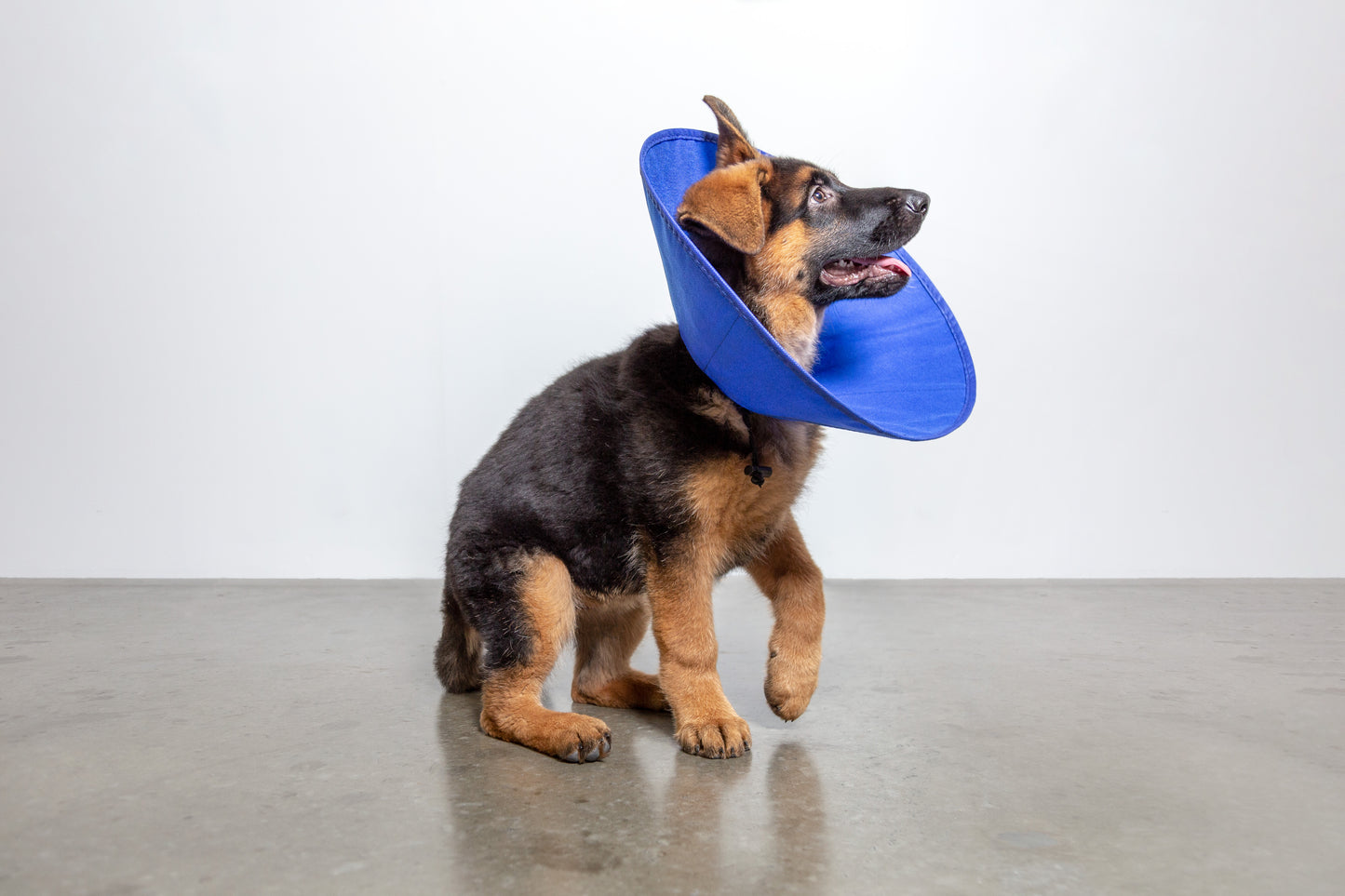
A global survey indicates that pets respond negatively to drastic changes in their mobility and ability to see. What can we do as pet parents to keep them happier while still being protected?
Pet Sadness and E-Collar Study
Pet parents know all too well how much their canine or feline friend dislikes the "cone of shame" when it's time for post-op recovery or when there's an itchy wound. However, evaluating the cone's effect on animal welfare has received scant attention.
Now, a new study from the University of Sydney's Sydney School of Veterinary Science confirms that the cone, or "Elizabethan collar" as it is called in the veterinary community, has a negative effect on both the animal's and the owner's quality of life.
Doctor of Veterinary Medicine student Yustina Shenoda and her professors at the Sydney School of Veterinary Science conducted a study that was published in the journal Animals. The study questioned pet owners about how the collar affected their animal's rest, nutrition, activity, socialization, and well-being.
Many pet parents reported that the e-collar prevents the pet from drinking or playing and can injure or irritate them. Damage to property and harm to the owners are further possible negative outcomes.
To learn more about how Elizabethan collars affected the lives of the animals who wore them, researchers conducted an international online survey. The United Kingdom, the United States, New Zealand, South Africa, Ireland, and Sweden were well-represented, but Australia accounted for the bulk of responders.
When the Elizabethan collar caused discomfort for their pet or hindered their ability to drink or play, the vast majority of the 434 respondents indicated a decrease in their companion animal's quality of life. Behavioral and emotional changes in their pets made many owners hesitant to keep the collar on.
Some complications that pet parents recognized in their dogs and cats included:
60.2% difficulty drinking
67.5% inability to play
25% e-collar related injuries sustained such as irritation, bumping into objects in the environment and psychological distress
KVP Recommends…
So what can KVP International recommend to pet parents facing e-collar adversity with their pets? Well, while the traditional plastic e-collar gets the job done right, and many pets don’t exhibit signs of distress quite like others may, e-collar variations are the number one solution.
The KVP® Calmer Collar allows pets to eat and drink with a specialized opening, and well as a soft fit to prevent irritation. There are also collars like the KONG® Cloud and the KVP Air-O that allow full-visibility while still offering protection. Depending on your pet, and what is most likely to cause psychological discomfort to them, an e-collar variation that addresses those pain points are available to you.
Another solution can also be within training pets for the circumstances when they may have to wear an e-collar, before they actually need one. Simply putting an e-collar on them for short amounts of time and rewarding them with treats allows pets to become comfortable with e-collars over time. This takes away the fear-factor in having an object they’ve never seen before soddenly blocking their vision.
Learn more about the KVP Preferred Line of E-Collars